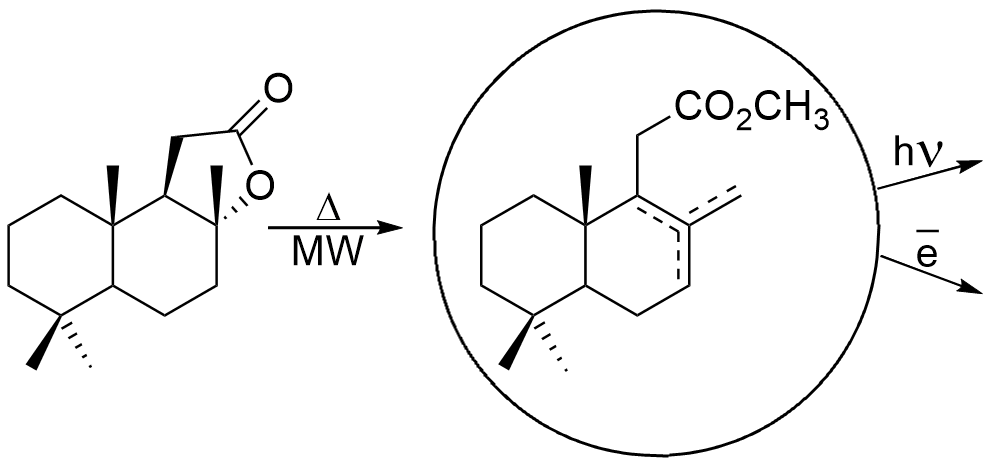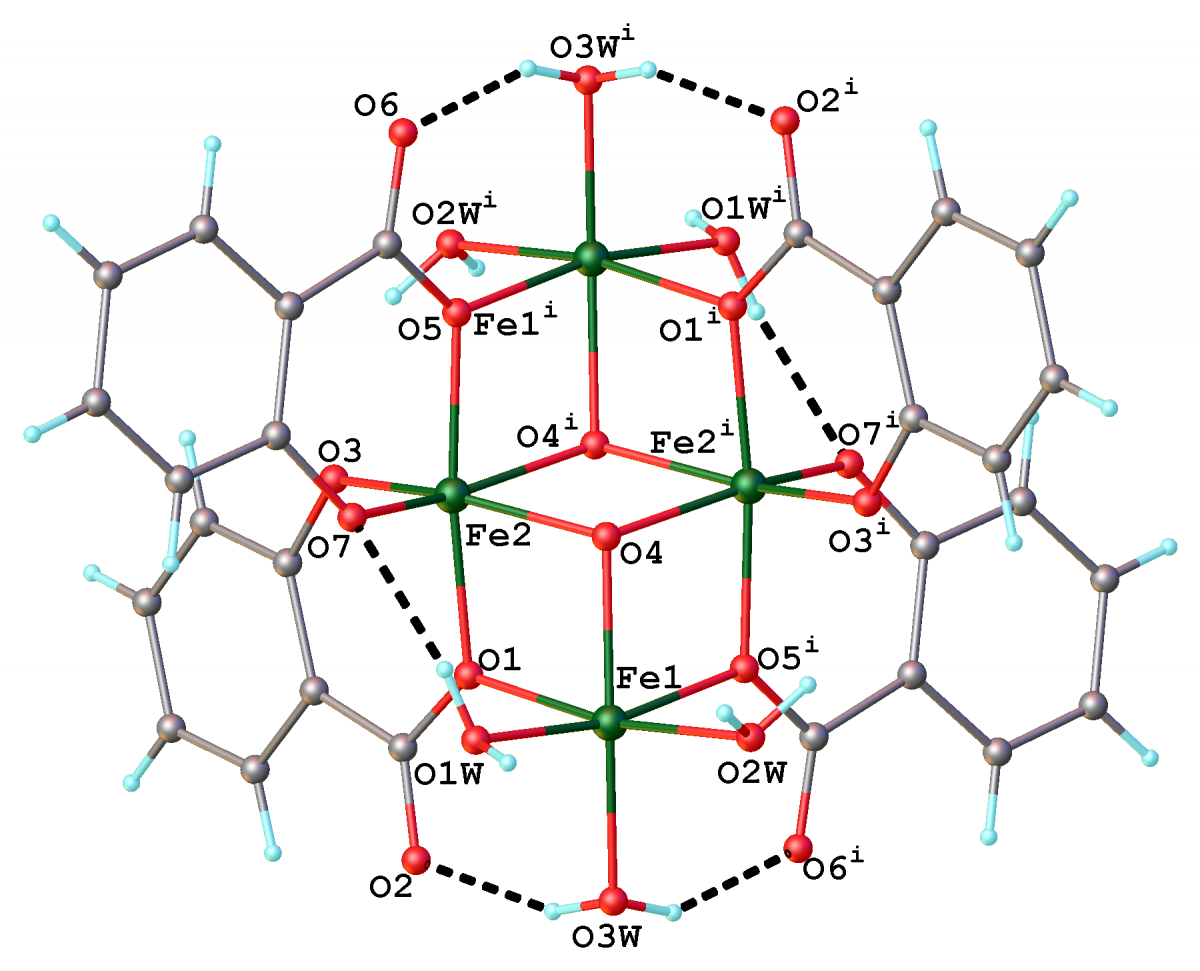Chemistry Journal of Moldova
2020 Volume 15, no.2
Author(s):
Field: Physical chemistry and chemical physics
Type: Invited paper
Issue: 2020 Volume 15, no.2
Pages: 7-28
Igor Povar
Field: Physical chemistry and chemical physics
Type: Invited paper
Issue: 2020 Volume 15, no.2
Pages: 7-28
Full Text (PDF): Download
Graphical Abstract: The main scientific achievements of great significance accomplished by Professor Ilie Fishtik at the University of Iowa and the Worcester Polytechnic Institute, in several fields of the physical chemistry as chemical thermodynamics, kinetics and heterogeneous catalysis were revealed and briefly analysed. Fundamental equations of chemical thermodynamics within the De Donder (stoichiometric) approach were reformulated in terms of a special class of chemical reactions, called as response reactions. Using this approach, the unusual behaviour of chemical equilibrium systems, to interpret the apparent contradictions to Le Chatelier principle and to discover hitherto unnoticed thermodynamic identities, was rationalised. The stabilities of chemical species were formulated in terms of a certain class of stoichiometrically unique chemical reactions and their thermochemical characteristics. A completely new approach for the generation and simplification of kinetic mechanisms for complex reaction systems was developed and applied. Based on a new type of reaction networks, referred to as reaction route graphs, a systematic method of analysis and reduction of a microkinetic mechanism was established and employed.
Downloads: 184
Author(s):
Field: Natural product chemistry and synthesis
Type: Research paper
Issue: 2020 Volume 15, no.2
Pages: 78-87
Brahim Ben Aicha, Rachid Rouabhi, Salim Gasmi, Chawki Bensouici, Hichem Mohammedi, Imad Mennai
Field: Natural product chemistry and synthesis
Type: Research paper
Issue: 2020 Volume 15, no.2
Pages: 78-87
Full Text (PDF): Download
Graphical Abstract: The present work focuses on evaluation of the chemical composition and antioxidant activity of the hydro-methanolic extract of Melissa officinalis from Algeria. The liquid chromatography-mass spectrometry analysis allowed the identification of six compounds: caffeic acid, caftaric acid, hydroxyjasmonic acid glucoside, caftaric acid glucoside, rosmarinic acid and sagerinic acid. The in-vitro antioxidant activity of the hydro-methanolic extract was evaluated by using four different methods including: radical scavenging assay (DPPH), scavenging activity (ABTS), cupric reducing antioxidant capacity, and ferric reducing power assay. The extract exhibited a relatively strong antioxidant activity compared to the synthetic antioxidants. The highest radical scavenging activity was registered using DPPH and ABTS methods, IC50= 20.53±2.64 μg/mL and 22.50±0.67 μg/mL, respectively. These results suggest that Melissa officinalis L. could be considered a potential source of natural antioxidants with potential interest in the agrochemical and pharmaceutical industries.


Downloads: 260
Author(s):
Field: Supramolecular chemistry
Type: Research paper
Issue: 2020 Volume 15, no.2
Pages: 45-53
Nguyen Thi Thu Thuy, Do Hoang Giang, Pham Khac Linh, Nguyen Tien Dat
Field: Supramolecular chemistry
Type: Research paper
Issue: 2020 Volume 15, no.2
Pages: 45-53
Full Text (PDF): Download
Graphical Abstract: Polysaccharides from the pods of haricot vert (Phaseolus vulgaris L.) were extracted using a simple heating method, by varying extracting temperature, heating time, solid-to-liquid ratio, and solvent compositions. The obtained results were processed using statistical analysis that helped to identify the optimal conditions for the polysaccharides’ extraction process. This study represents a promising production method of bioactive polysaccharides extract in the food and pharmaceutical industry.


Downloads: 148
Author(s):
Field: Industrial chemistry
Type: Research paper
Issue: 2020 Volume 15, no.2
Pages: 54-61
Pezhman Zolfaghari, Neda Imani Payandeh, Mortaza Golizadeh, Afzal Karimi, Amirali Ebadi Fard Azar
Field: Industrial chemistry
Type: Research paper
Issue: 2020 Volume 15, no.2
Pages: 54-61
Full Text (PDF): Download
Graphical Abstract: This paper presents the development and optimization of a new approach which combines the utilization of activated carbon and glucose oxidase enzyme for decolourisation of beet sugar syrup. The combining of the physical adsorption with the enzymatic reaction was managed to improve the decolourisation of beet sugar syrup from 35.29 to 83.68% compared to the basic adsorption by activated carbon after 120 min of operation under the optimum conditions. The maximum decolourisation efficiency by the coupled process was achieved at glucose oxidase dosage of 0.07 g, glucose concentration of 20 mM, and solution pH 7 at the temperature of 30ºC using 0.01 g of activated carbon particles. Given the high effectiveness, reusability, and the eco-friendly nature of the process, the proposed method can serve as an alternative to ordinary decoloursation techniques.


Downloads: 100
Author(s):
Field: Natural product chemistry and synthesis
Type: Research paper
Issue: 2020 Volume 15, no.2
Pages: 69-77
Alexandru Ciocarlan, Lidia Lungu, Svetlana Blaja, Ion Dragalin, Aculina Aricu
Field: Natural product chemistry and synthesis
Type: Research paper
Issue: 2020 Volume 15, no.2
Pages: 69-77
Full Text (PDF): Download
Abstract (PDF)
Graphical Abstract: The present paper reports the results of microwave irradiation assisted method for the preparation of bicyclohomofarnesenic methyl esters versus classical Stoll and Hinder method. Moreover, the chemical transformations of bicyclohomofarnesenic methyl esters via anodic electrooxidation and dye-sensitized photooxidation were performed. A new method for the preparation of methyl 7-oxo-13,14,15,16-tetranorlabd-6,8(8)-dien-12-oate and the mechanism of electrochemical products formation are presented. The structure of all synthesized compounds was fully confirmed by spectral methods.

Downloads: 219
Author(s):
Field: Organic chemistry
Type: Research paper
Issue: 2020 Volume 15, no.2
Pages: 99-104
Kabeer Ahmed Shaikh and Uddhav Nivrutti Chaudhar
Field: Organic chemistry
Type: Research paper
Issue: 2020 Volume 15, no.2
Pages: 99-104
Full Text (PDF): Download
Abstract (PDF)
Graphical Abstract: The present paper shows that lanthanum(III) nitrate hexahydrate can be used as mild and environment friendly homogeneous catalyst for an efficient one-pot multi-component synthesis of biologically active 1,8-dioxo-octahydroxanthene and 14H-dibenzo[a,j]xanthene derivatives. The solvent free condensation reaction of aromatic aldehydes and dimedone or β-naphthol was carried out at 70-80ºC during 10-30 min. The advantages of this eco-friendly synthesis route are numerous, and include the use of an inexpensive catalyst, high to excellent yield, short reaction time and high catalytic activity that can make this method an interesting alternative to multi-step approaches.

Downloads: 137
Author(s):
Field: Ecological chemistry
Type: Research paper
Issue: 2020 Volume 15, no.2
Pages: 38-44
Vitālijs Lazarenko, Zenta Balcerbule, Vita Rudoviča, Arturs Vīksna
Field: Ecological chemistry
Type: Research paper
Issue: 2020 Volume 15, no.2
Pages: 38-44
Full Text (PDF): Download
Abstract (PDF)
Graphical Abstract: The aim of this research work was to evaluate the pollution level of phosphorus, sulphur and nitrogen in the former manufacturing areas (the former Kuprava drainage pipe
 factory and landfill site) and compare it with the Sita forest area levels using lichens as bioindicators. Additionally, the correlation between the content of these elements in lichens and soil was examined. The research results show that in the former drainage pipe factory area and landfill site, the levels of phosphorus, sulphur and nitrogen content were elevated in comparison with Sita forest. In the case of phosphorus and nitrogen contents, a positive correlation was observed between soil and lichen samples.
factory and landfill site) and compare it with the Sita forest area levels using lichens as bioindicators. Additionally, the correlation between the content of these elements in lichens and soil was examined. The research results show that in the former drainage pipe factory area and landfill site, the levels of phosphorus, sulphur and nitrogen content were elevated in comparison with Sita forest. In the case of phosphorus and nitrogen contents, a positive correlation was observed between soil and lichen samples. Downloads: 119
Author(s):
Field: Organic chemistry
Type: Research paper
Issue: 2020 Volume 15, no.2
Pages: 88-98
Roman Rusnac, Maria Botnaru, Nicanor Barba, Peter Petrenko, Yurii Chumakov, Aurelian Gulea
Field: Organic chemistry
Type: Research paper
Issue: 2020 Volume 15, no.2
Pages: 88-98
Full Text (PDF): Download
Graphical Abstract: The research is devoted to the study of unexpected products that formed as a result of the condensation reaction between 2-acetylpyridine and 2-formylpyridine under the Claisen-Schmidt reaction conditions. As a result, a sequence of reactions leading to the following compounds has been proposed: 1,3-bis (pyridin-2-yl) prop-2-en-1-one (3); 1,3,5-tri (pyridin-2-yl) pentane-1,5-dione (4); (2,4-dihydroxy-2,4,6-tri(pyridin-2-yl)cyclohexyl)(pyridin-2-yl)methanone (5) and (4-hydroxy-2,4,6-tri(pyridin-2-yl)cyclohexane-1,3-diyl)bis(pyridin-2-ylmethanone) (6) as well as 2-formylpyridine (1) and 2-acetylpyridine (2). The plausible mechanism of these chemical transformations has been proposed. All the obtained compounds demonstrate moderate antimicrobial, antifungal and antioxidant activity.


Downloads: 176
Author(s):
Field: Ecological chemistry
Type: Research paper
Issue: 2020 Volume 15, no.2
Pages: 29-37
Stefano Ubaldini, Igor Povar, Tudor Lupascu, Oxana Spinu, Francesca Trapasso, Daniele Passeri, Serena Carloni, Daniela Guglietta
Field: Ecological chemistry
Type: Research paper
Issue: 2020 Volume 15, no.2
Pages: 29-37
Full Text (PDF): Download
Graphical Abstract: The application of a new hydrometallurgical process for gold extraction by thiosulphate leaching from Romanian mining wastes, coming from Balan and Deva deposits, was studied. There was obtained 85% of Au extraction after leaching; moreover, an integrated flow-sheet, including recycling of process solution and carbon, was outlined, based on results obtained at a laboratory scale, using a schematic chemical circuit of treatment. Global recovery of the process (leaching-adsorption-desorption-electrodeposition) of about 75-80% of Au was achieved. The developed integrated flow-sheet, allows to recycle the reagents during the process, with a loss of only 5-10%, in particular thiosulphate and alcohol, for each complete circuit of treatment.


Downloads: 98
Author(s):
Field: Inorganic and coordination chemistry
Type: Research paper
Issue: 2020 Volume 15, no.2
Pages: 62-68
Viorina Gorinchoy
Field: Inorganic and coordination chemistry
Type: Research paper
Issue: 2020 Volume 15, no.2
Pages: 62-68
Full Text (PDF): Download
DOI: https://doi.org/10.19261/cjm.2020.758
Abstract (PDF)
Graphical Abstract: A new tetra-homonuclear iron(III) cluster, [Fe4O2(Sal)4(H2O)6]·4DMA·0.75H2O, where Sal= salicylic acid and DMA= N,N-dimethylacetamide consolidated via two µ3-oxo- and four salicylate-bridges was synthesized and characterized by IR spectroscopic method as well as by single crystal X-ray diffraction analysis. The structure of the obtained tetranuclear compound consists of four FeIII atoms in a “butterfly” arrangement. The coordination sphere of each of the two central FeIII atoms is generated by two μ3-oxo-bridging atoms and four oxygen atoms provided by the tridentate-bridging Sal2- ligands, while the coordination polyhedron of another two iron atoms involve six oxygen atoms from three water molecules, two salicylic and one μ3-oxigen atom. The Fe-O distances within Fe-O-Fe bridge are of 2.102(3) Å (for wing-body) and 2.038(3) Å (for body-body).

Downloads: 138






